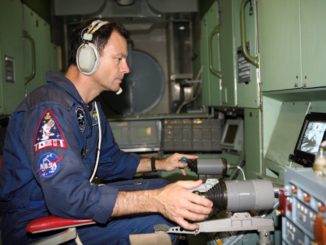
Update 9:00 p.m. EST: SpaceX successfully launched its Falcon 9 rocket for the Starlink 6-37 mission.
The second time will be the charm for SpaceX as it was able to launch its Falcon 9 rocket from Cape Canaveral Sunday evening among the clouds. It launched at 8:52 p.m. EST (0152 UTC) on Sunday, Jan. 14, from Space Launch Complex 40 (SLC-40) at Cape Canaveral Space Force Station following a Saturday night scrub.
The company was launching at a rate of about every four days or so from the Cape towards the end of 2023. However, the launch cadence on the East Coast has slowed somewhat with one of the two Florida-based droneships, ‘Just Read the Instructions,’ still on the sidelines after it was damaged during a booster recovery in late December.
The first stage booster supporting Saturday evening’s launch, tail number B1073, made its 12 flight on the Starlink 6-37 mission. Its pedigree includes launching ispace’s HAKUTO-R Mission 1 lander, SpaceX’s 27th Commercial Resupply Services (CRS-27) mission and seven Starlink missions.
A little over eight minutes after liftoff, B1073 landed on the droneship, ‘A Shortfall of Gravitas.’ This was the 57th landing on ASOG and the 264th SpaceX booster landing to date. SpaceX will also endeavor to recover the payload fairings.
Starlink driving business
The Starlink missions have been and continue to be the cornerstone of SpaceX’s business model. During a company talk published to social media, SpaceX founder Elon Musk said of the 96 Falcon flights in 2023, two-thirds were for Starlink missions.
Musk pointed to the Russian family of Soyuz rockets launching 63 in one year, which was a previous record. Using just the Falcon 9 rocket, SpaceX launched 63 Starlink missions during 2023. He quipped about the rapidly increasing pace of launches, driven by the broadband internet satellites.
“For a while there, I’d be posting something, like, ‘Is this the launch that just happened or the one that is happening?’ because there were like three launches that happened in the space of a few days,” Musk said. “All [96] made it to obit, all landed. So, just a huge hand for the Falcon team.”
Musk noted that they will continue to fly the Starlink V2 Minis until the Starship rocket can start launching the full-size Starlink V2 satellites, which Musk said may end up being called Starlink V3.
“The biggest, single goal for Starlink from a technical standpoint is to get the mean latency below 20 milliseconds,” Musk said, adding that he ultimately wants the network to be faster than a ground-based system. Minutes later though, he noted that Starlink wasn’t intended to replace terrestrial internet.
“It does really well for low-population density areas, but it is really not going to be competitive in high-density cities,” Musk said. “It’s really low-density situations, which is really where the need is.
He also said that they’re working to activate Starlink service in more than half of the world by population by the end of 2024. Musk added that they are also introducing what he called a Starlink Mini user terminal “which can fit in a backpack.”

Big ambitions
SpaceX expects to far exceed its record launch year in 2023. Musk said that his goal is to reach roughly 150 launches, not including Starship launches. To achieve that, SpaceX needs to ratchet up the turnaround rate for its three launch pads.
Musk said they hope to get that rate to under 24 hours by the end of the year. However, he didn’t go into detail on what steps SpaceX will take to achieve that goal from a pad infrastructure level.
He did however state that they’re working to double the launch qualifications for their Falcon first stage booster fleet.
“We’ve done a 19th re-flight. We’re now qualifying Falcon 9 to be able to do 40 flights,” Musk said. “And then, let’s not forget fairing recovery because actually, a lot of people don’t realize we recover the fairings as well.”
Musk said they’ve recovered payload fairings 300 times. They hope to add two more to the number following Saturday night’s mission.





Does this booster have the self-leveling legs that would prevent a post-landing toppling like happened to booster 1058?
When publishing articles announcing intended launches, in addition to the scheduled time, why not also include the date? Duh!!!